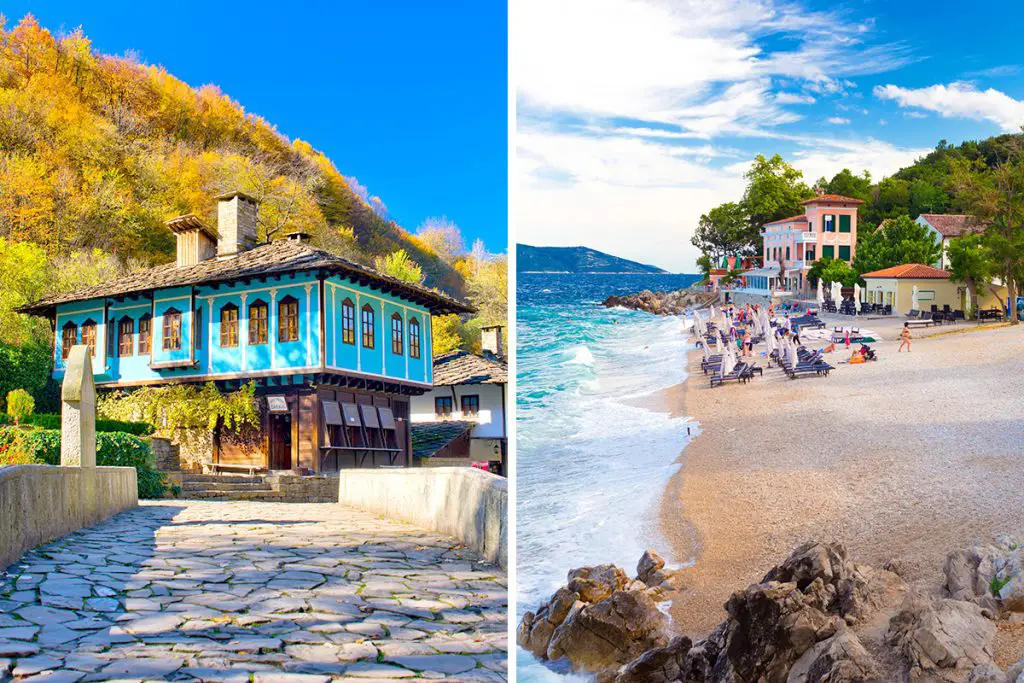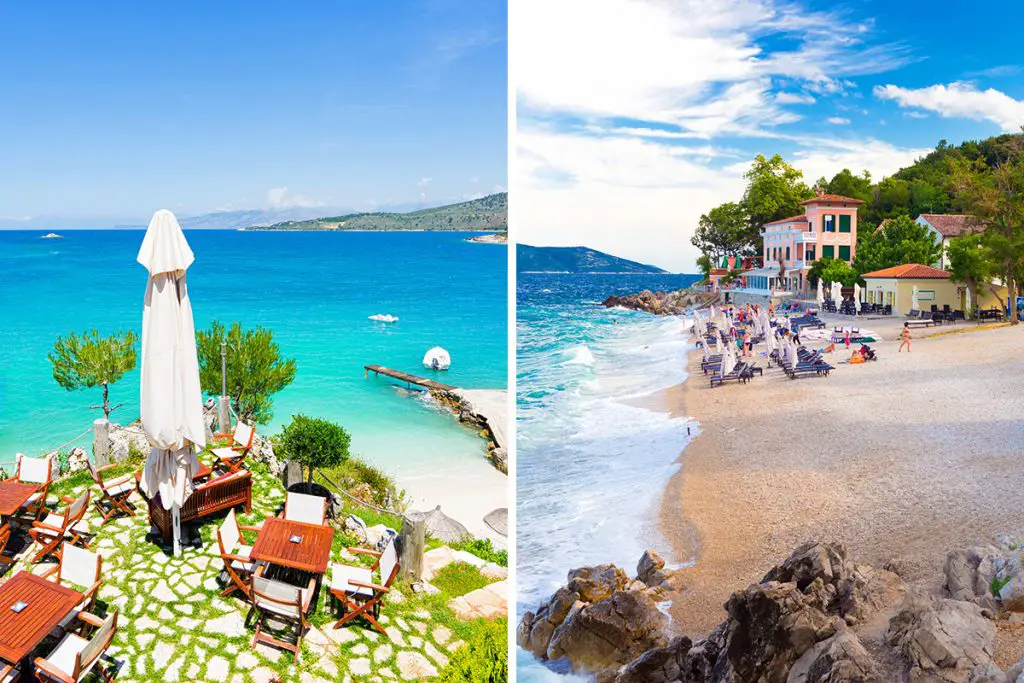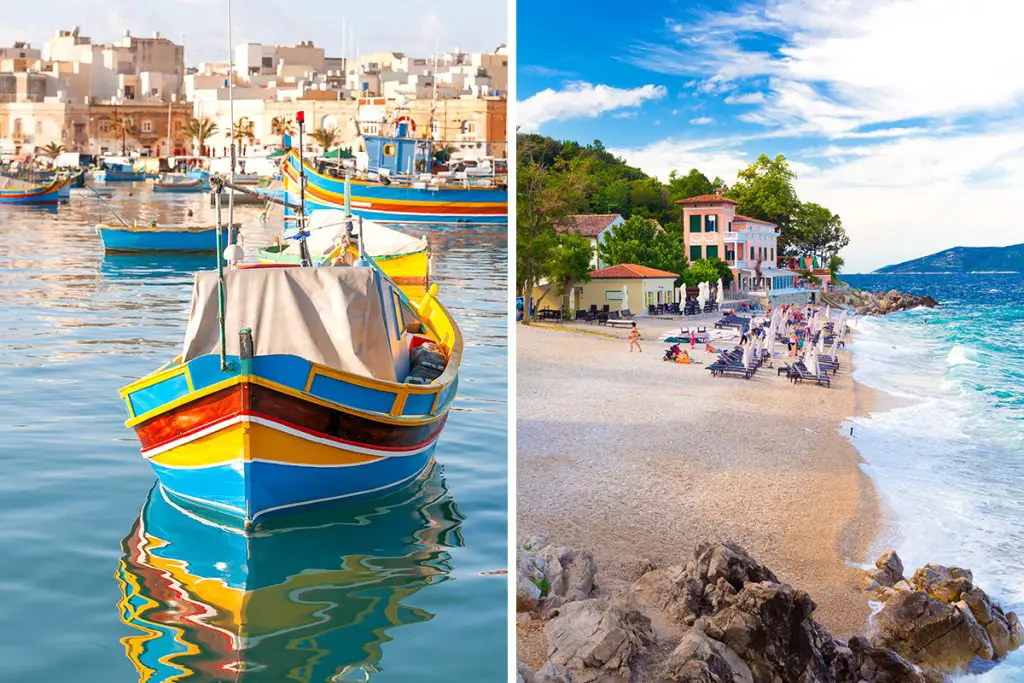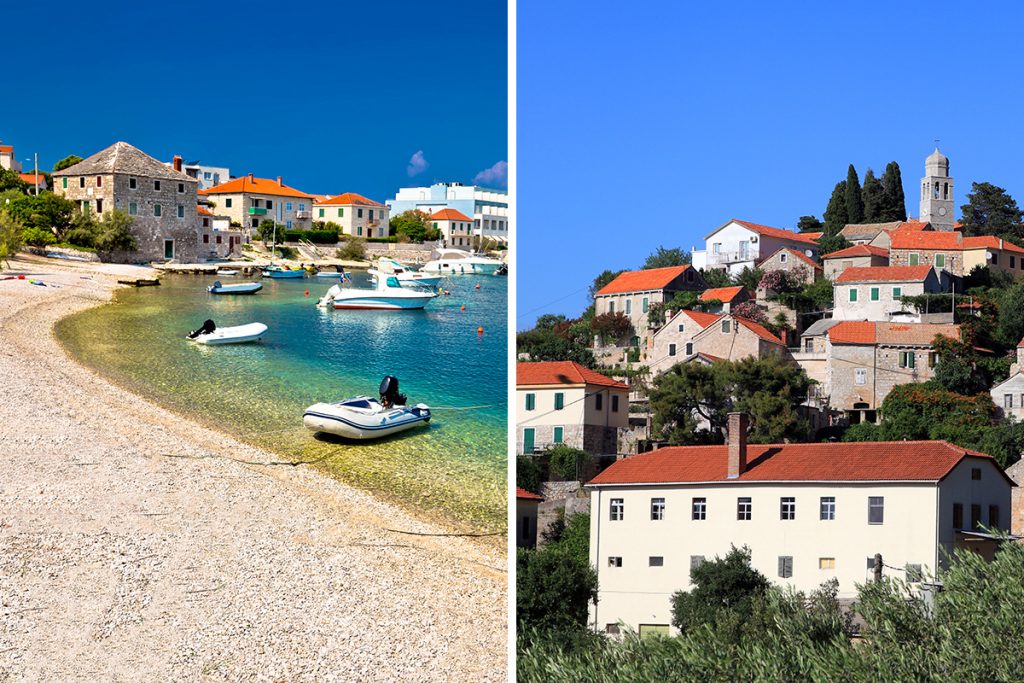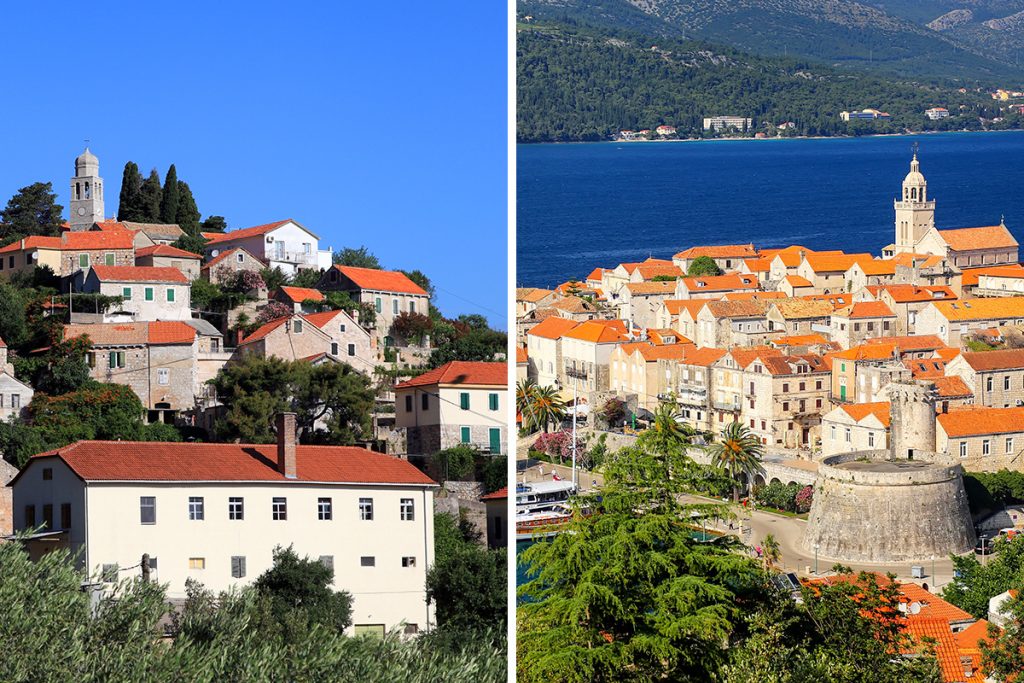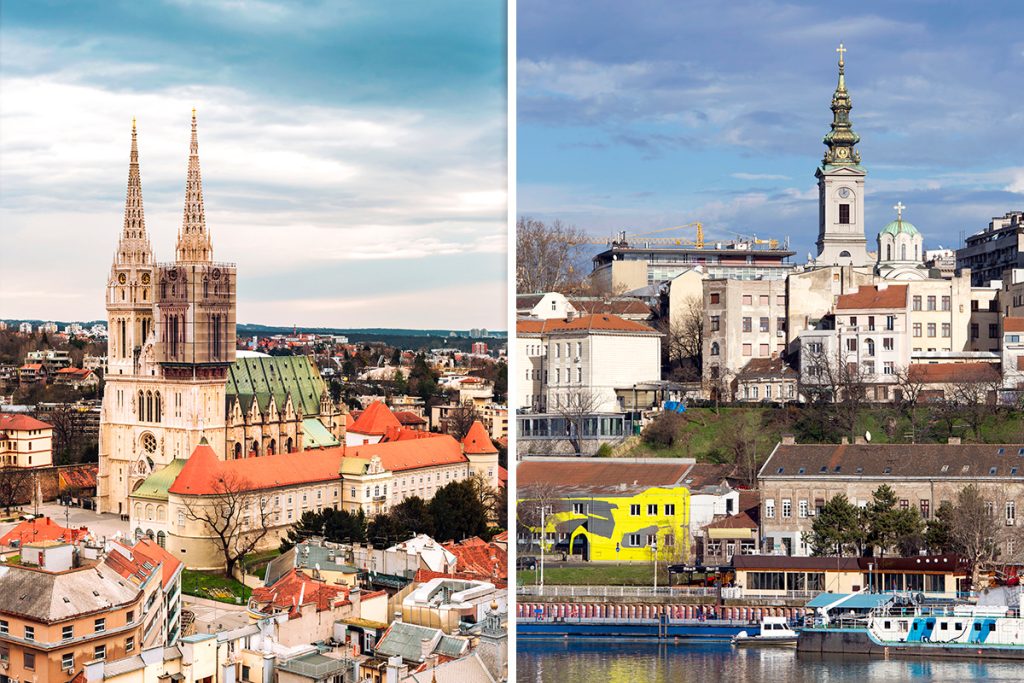Choosing a destination for your next Croatian adventure might be a tougher task than you thought. Zadar and Split, both brimming with beauty and history, have unique appeals that can make your trip special in different ways. So, are you ready to delve deeper into these magnificent cities and discover what suits your travel cravings?
History & Culture
Embarking on a journey to Zadar or Split means walking through the pages of history. Each city boasts a rich past and vibrant culture that adds a unique flavor to your visit.
Zadar, dating back to the 9th century BC, tells tales of ancient times. This city was once a hub for the Illyrians, Romans, and Byzantines, each leaving their unique marks. You’ll find traces of the past at every corner, all while experiencing a lively contemporary culture that’s as rich as its history. In Zadar, old and new coexist in delightful harmony.
In contrast, Split offers you the chance to step into a living Roman palace. The city revolves around Diocletian’s Palace, a well-preserved fortification that dates back to the Roman Empire. The labyrinthine streets of Split whisper stories of emperors and centuries gone by, leading you into a fascinating exploration of its cultural heritage.
But it’s not just about the past. Both Zadar and Split are alive with a thriving contemporary culture. Music, art, festivals – the cities pulsate with creative energy that adds an exciting layer to their historical allure.
In summary, whether you choose Zadar or Split, you’ll be stepping into cities where the echoes of the past blend seamlessly with the vibrant energy of the present. The decision between Zadar’s centuries-spanning narrative and Split’s Roman-centric history could be a tough one. But rest assured, either choice will immerse you in a cultural journey unlike any other.
Attractions & Activities
Imagining a trip to Zadar or Split can make your heart flutter with anticipation. Each city has a unique blend of attractions and activities that could captivate your interest.
Zadar enchants visitors with its mix of ancient and modern attractions. The Sea Organ, a fascinating architectural marvel, uses the ocean waves to create enchanting melodies. It’s a symphony composed by nature, just for your ears. Not far from there, the Sun Salutation collects the sun’s energy during the day to create a dazzling light show as twilight descends.
In Split, your fascination will be piqued by the grandeur of Diocletian’s Palace, a UNESCO World Heritage site. Wandering through the labyrinthine streets within the palace, your senses will be enthralled by the echoes of the past.
If you’re craving adventure, the Marjan Hill is a must-visit. It offers picturesque hiking trails with panoramic views of the city and the surrounding islands.
Beyond the city limits, Zadar serves as a gateway to the beautiful Plitvice Lakes National Park, where you can explore the stunning cascades and turquoise waters. Split, on the other hand, gives you easy access to the Krka National Park, where you can enjoy the sights of spectacular waterfalls.
Summing up, both Zadar and Split have an array of unique attractions that could make your journey memorable. Will you be charmed by the harmonious blend of past and present in Zadar, or would the allure of a living Roman palace and natural attractions in Split take your heart away? The choice is yours to make.
Beaches
Embracing the sparkling Adriatic Sea, both Zadar and Split offer some stunning beaches that can be your perfect escape on a sunny day.
Zadar, with its rocky and pebbly shores, provides a unique beach experience. Kolovare, the city’s main beach, is only about 1 km (0.6 miles) from the city center. It offers a tranquil setting where you can relax and soak up the sunshine.
In contrast, Split boasts some sandy beaches that attract sun-seekers from all corners. Bacvice Beach, less than 1 km (0.6 miles) from the city center, is a favorite spot among locals and tourists alike. Its shallow waters make it a perfect spot for a relaxing dip in the sea.
If you prefer a more secluded setting, Zadar’s picturesque beaches on the nearby islands of the Zadar archipelago will not disappoint. In Split, the stunning beaches of the nearby islands like Brac and Hvar are just a short ferry ride away.
In a nutshell, whether you prefer the pebbly beaches of Zadar or the sandy shores of Split, both cities offer idyllic seaside retreats where you can unwind. Will it be the tranquil, rocky shores of Zadar or the bustling, sandy beaches of Split? It’s your call to make.
Eating, Drinking & Nightlife
Now let’s explore the flavors and nightlife of Zadar and Split, two cities that can tantalize your taste buds and thrill your evenings.
Zadar is a haven for food lovers. From the local konoba (taverns) to upscale restaurants, you can taste the diverse flavors of Dalmatian cuisine. The city’s seafood, harvested from the Adriatic Sea, is a must-try. As you stroll through the streets, the aroma of pršut (Croatian smoked ham) and paški sir (Pag cheese) can be irresistible.
Split, on the other hand, offers a culinary scene that beautifully combines tradition and innovation. Here, you can sample soparnik (a unique pie filled with Swiss chard) or feast on a lavish peka, a slow-cooked dish usually made with lamb or veal under a bell-like dome.
When it comes to drinks, Zadar is known for its Maraschino liqueur, a sweet treat that has won the hearts of many over centuries. In Split, you can enjoy the flavors of Dalmatian wines, with the velvety reds from the island of Hvar and the crisp whites from Korčula.
As night falls, Zadar’s charming old town transforms into a lively area with bars and clubs pulsating with music. The Garden, overlooking the old city walls, is a hotspot for music lovers. Split’s nightlife, concentrated around the Bacvice neighborhood, boasts a bustling scene with everything from jazz bars to dance clubs.
In a nutshell, whether it’s the local delicacies and vibrant nightlife of Zadar or the culinary innovations and lively bars in Split, both cities offer a taste of the Croatian lifestyle. Will you choose the Maraschino-flavored evenings of Zadar or the wine-tasting nights in Split?
Shopping
Shopping in Zadar and Split can be an experience that mirrors the spirit of these Dalmatian cities.
Zadar, with its boutiques and shops spread across the old town, offers a unique shopping experience. From local handicrafts to designer labels, there’s something for everyone. The city is renowned for its artisanal products, especially the Pag lace, a traditional needlepoint lace that could make a precious souvenir.
In Split, shopping takes a more eclectic turn. The bustling Green Market, located near the old town, is a vibrant spot where you can buy fresh local produce, homemade cheeses, and cured meats. For those with a penchant for designer items, the Marmontova Street, lined with high-end boutiques, is a shopper’s paradise.
Both cities also host open-air markets where you can find local crafts, handmade jewelry, and unique artworks. Zadar’s People’s Square market and Split’s bustling flea market near the Silver Gate of the Diocletian’s Palace are the highlights.
To sum up, shopping in Zadar and Split provides an array of choices, from artisanal goods to designer brands. Will it be the lacework and local craft of Zadar or the eclectic mix of traditional and modern in Split that appeals to your shopping sense?
Accommodation
Deciding where to stay is an important part of your trip, so let’s compare the accommodation options in Zadar and Split.
In Zadar, you can find a range of lodging choices to fit your budget and preferences. From cozy bed and breakfasts to luxurious hotels, Zadar offers a mix of traditional and modern stays. If you’re looking for a unique experience, consider staying in the old town to immerse yourself in the city’s rich history.
Split, on the other hand, boasts an array of accommodation types. The city has boutique hotels, modern apartments, and budget-friendly hostels. For a memorable stay, consider a room in the Diocletian’s Palace, where you can be surrounded by ancient Roman architecture.
When it comes to family-friendly options, both Zadar and Split cater to the needs of travelers with children. Many hotels offer amenities like playgrounds, swimming pools, and babysitting services, ensuring a comfortable and enjoyable stay for everyone.
In terms of price, Zadar generally offers more budget-friendly accommodation compared to Split. However, both cities provide a variety of options suitable for different price ranges.
In summary, whether you prefer a historic stay in Zadar’s old town or the bustling atmosphere of Split, both cities have accommodation options to match your needs and budget. Your choice will depend on your personal preferences and the kind of experience you desire.
Family-Friendliness & Children’s Activities
When traveling with your family, it’s important to find destinations with fun and engaging activities for children. Let’s compare the family-friendly offerings in Zadar and Split.
Zadar has plenty to offer for families with children. You can visit the Sea Organ and the Sun Salutation, where kids can marvel at the unique sounds and lights. The city also has several parks and playgrounds, such as the Vladimir Nazor Park, which is perfect for a relaxing afternoon with your family.
Split, too, has numerous attractions that cater to children. You can visit the Split Aquarium and the Archaeological Museum, both of which provide an educational and entertaining experience for the whole family. The Marjan Forest Park, with its beautiful views and playgrounds, is another great spot for family outings.
When it comes to beaches, both cities have family-friendly options. In Zadar, Borik Beach offers shallow waters and a range of amenities, while in Split, Bačvice Beach has lifeguards on duty and plenty of entertainment options.
For families looking for more adventure, both Zadar and Split offer various outdoor activities. Zadar has the Zadar Adventure Park, where kids can challenge themselves on obstacle courses. In Split, families can explore the beautiful landscapes through hiking or cycling tours.
In conclusion, both Zadar and Split are excellent choices for families with children, offering a variety of activities and attractions that cater to all ages. Whether it’s the unique installations in Zadar or the outdoor adventures in Split, your family will surely have a memorable trip.
Getting There & Getting Around
Ease of access and transportation options are essential when choosing your destination. Let’s compare how to get to Zadar and Split and the transportation options within the cities.
To reach Zadar, you can fly into Zadar International Airport, which is about 8 miles (12.9 km) from the city center. From there, you can take a bus or taxi to your accommodation. Split’s main airport, Split International Airport, is located about 15 miles (24.1 km) from the city center. Upon arrival, you can use the airport shuttle bus or a taxi to reach your destination.
Within Zadar, getting around is quite simple, as the city is compact and walkable. For longer distances, you can use public buses, which cover most of the city and its surroundings. You can also rent a bike or a car if you prefer more flexibility. Taxis are also available, but they can be expensive.
Split is a larger city than Zadar, but it also has a pedestrian-friendly old town that you can explore on foot. To get to other parts of the city or nearby attractions, you can use public buses, which are frequent and reliable. You can also rent a bike or a car, but be aware that parking can be difficult and costly in the city center. Taxis are another option, but they are not very cheap.
If you want to travel between Zadar and Split, you have several options.
You can take a bus, which is the cheapest and most common way to get from one city to another. You can also take a private transfer, which is more comfortable and convenient, but also more expensive. Another option is to take a ferry, which is more scenic and adventurous, but also more time-consuming and seasonal.
As you can see, both Zadar and Split are easily accessible and offer various transportation options to suit your needs and preferences. Whether you prefer to fly, drive, bus, or ferry, you can find a way to get to and around these beautiful Croatian cities.
Weather
When planning your trip to either Zadar or Split, understanding the weather conditions is crucial. Both cities, situated on the Adriatic Sea, have a Mediterranean climate, but there are subtle differences.
Zadar boasts a mild, Mediterranean climate with warm summers and mild winters. Summer temperatures average around 86°F (30°C), perfect for beach activities and exploring the city. In contrast, winters can get somewhat chilly, with averages around 46°F (8°C).
Split also enjoys a Mediterranean climate, with hot, dry summers and mild, wet winters. In the summer, temperatures often reach 88°F (31°C), making it an ideal time to visit the beautiful beaches and outdoor attractions. During winter, temperatures hover around 48°F (9°C), slightly milder than Zadar.
The difference in rainfall between the two cities is also worth noting. Zadar tends to get less rainfall than Split throughout the year. Therefore, if you prefer a drier vacation, Zadar might be the better choice.
In conclusion, both Zadar and Split have enjoyable climates that cater to different activities. If you prefer slightly cooler summer temperatures and a drier climate, Zadar might be more appealing. If, however, you don’t mind a bit more heat and occasional rainfall, Split offers equally enjoyable weather conditions.
Safety
Your safety while traveling is paramount. Let’s compare the safety conditions in Zadar and Split.
Zadar and Split, like most Croatian cities, are generally safe for tourists. Petty crimes such as pickpocketing can occur in busy areas, but these incidents are relatively rare. As in any city, being aware of your surroundings and keeping your belongings secure can help ensure a trouble-free visit.
In terms of traffic safety, Zadar has fewer cars in the city center due to its pedestrian-friendly layout. This setup minimizes the risk of traffic-related incidents. On the other hand, Split, with its busier traffic, demands more attention when crossing streets, especially in high-traffic areas.
For those with health concerns, both Zadar and Split have good healthcare facilities, with English-speaking staff and modern equipment. Pharmacies are widely available, and emergency services respond promptly.
Another aspect of safety is related to swimming in the Adriatic Sea. Both cities have beaches with lifeguards on duty during the summer season, ensuring safe swimming conditions for everyone.
In conclusion, both Zadar and Split maintain high safety standards, making them excellent choices for a worry-free vacation. Remember, being aware of your surroundings and following general safety practices will contribute to a more enjoyable trip.
Cost
Budgeting is an important part of planning your trip. Let’s compare the costs you might incur in Zadar and Split.
Generally, Zadar is considered to be more budget-friendly compared to Split. Accommodation in Zadar averages around 600 HRK (approximately 90 USD) per night in the summer season. In contrast, a night in Split can cost around 800 HRK (roughly 120 USD).
When it comes to dining, both cities offer a range of options. A meal at an average restaurant in Zadar might cost you around 80 HRK (12 USD), while in Split, the same could cost about 100 HRK (15 USD).
Public transportation in both cities is fairly priced, with a one-way ticket costing around 10 HRK (1.5 USD). However, given the walkable nature of both cities, you might not use public transportation frequently.
Entrance fees to attractions in both cities are also affordable, usually not exceeding 50 HRK (7.5 USD). However, this can vary depending on the specific attraction.
In summary, while both Zadar and Split are relatively affordable destinations, Zadar has a slight edge over Split in terms of cost. However, the difference is not very significant, and you can still enjoy both cities without breaking the bank. Ultimately, your budget will depend on your personal preferences and travel style.
Which Is Better – Zadar or Split?
Deciding between Zadar and Split can be challenging as both offer unique experiences. Let’s summarize the previous sections to guide you in making your decision.
In terms of attractions and activities, Zadar impresses with its historic charm, rich cultural heritage, and unique attractions like the Sea Organ and Sun Salutation. Split, on the other hand, showcases a blend of ancient and modern, with its vibrant lifestyle, UNESCO-listed Diocletian’s Palace, and opportunities for outdoor adventures.
If you are into unique sound and light installations, Zadar would be your place. If you appreciate an eclectic mix of ancient and modern, then Split is the city for you.
Moving on to the accommodation, Zadar generally offers more budget-friendly options compared to Split, and both cities provide a variety of choices suitable for different price ranges.
If you prefer affordable yet comfortable accommodations, Zadar is a better option. However, if you’re keen on experiencing the bustling atmosphere of a more populous city, Split might suit you better.
When considering family-friendliness, both cities excel. Zadar and Split offer a range of children’s activities, family-friendly attractions, and amenities that ensure a comfortable stay for the whole family. Either city would make a great choice for a family trip.
Looking at transportation, both cities are compact and mostly walkable, with efficient public transport systems. Zadar’s pedestrian-friendly layout is a plus for those who prefer less traffic, while Split’s bustling city vibe might appeal to others. Your decision here might boil down to personal preference.
The weather in both cities is generally pleasant, with Zadar being slightly cooler and drier. If you prefer slightly cooler temperatures and a drier climate, Zadar would be a better option. On the other hand, if you can handle a bit more heat and don’t mind occasional rainfall, Split would be more suitable.
Lastly, regarding costs, Zadar tends to be more affordable than Split, from accommodations to dining. If you’re traveling on a budget, Zadar would be a better choice. However, if you’re willing to spend a bit more for a wider array of experiences, Split is worth considering.
In conclusion, your choice between Zadar and Split depends largely on your personal preferences and what you value most in your travel experience. Whether it’s the unique charm of Zadar or the dynamic vibe of Split, both cities offer unforgettable experiences on the beautiful Croatian coast.


